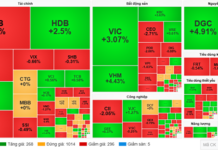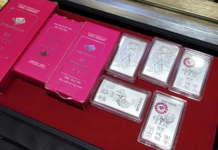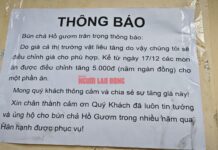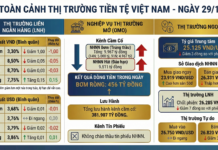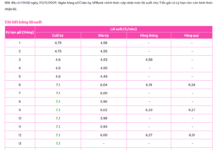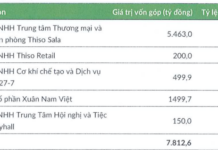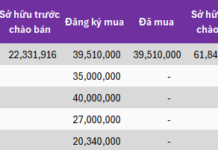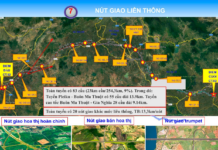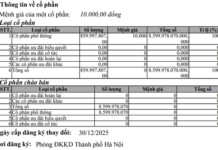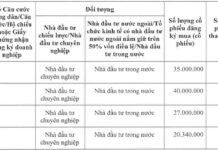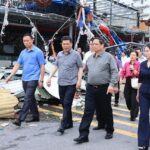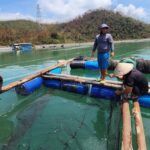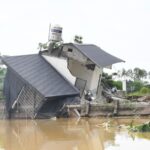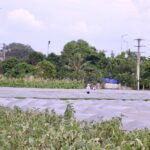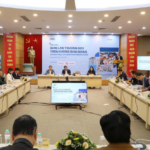The Directorate of Fisheries (Ministry of Agriculture and Rural Development) reported that according to incomplete statistics, there were approximately 19,956 hectares of aquaculture water surface and 4,246 damaged and washed-away cages, causing severe damage to both physical infrastructure and aquaculture.
SIGNIFICANT DAMAGE TO AQUACULTURE
Typhoon Yagi directly hit the coastal areas of Hai Phong and Quang Ninh, home to some of the largest cage fish farming areas in Northern Vietnam. Nearly a week has passed since the storm made landfall in the country, but the damage it caused is devastating for many farmers and businesses, with losses close to a total wipeout due to the impact of the storm and floods. The floodwaters also swept away raw materials, compounding the challenges.
Large waves destroyed fish cages in Cat Ba, Do Son (Hai Phong), and Van Don (Quang Ninh), washing away hundreds of tons of fish. Farmers lost their entire yield, not to mention the damage to cages and infrastructure. Many coastal shrimp and clam farming areas were inundated, and pond embankments collapsed, forcing early harvests or total losses. In Van Don, famous for its oyster and clam farming models, strong waves washed away millions of seedlings, causing severe economic damage.
Ms. Nguyen Thi Hai Binh, CEO of STP Group, said that the company’s farming area in Quang Ninh was severed and washed away. The company’s computer control equipment installed in the cages was sunk and inoperable. Although the company has located the equipment, they have not been able to salvage them to check if they are still functional. The company lost all its mooring nets, plankton, and large fish weighing about 40 kg each. The estimated loss for the company is nearly VND 10 billion.
According to Mr. Tran Dinh Luan, Director of the Directorate of Fisheries, Typhoon Yagi not only destroyed infrastructure but also significantly altered water quality in farming areas, causing long-term negative impacts. Heavy rains from the typhoon washed soil, rocks, and waste into ponds, lakes, and bays, increasing pollution levels. This environmental shock affected many sensitive aquatic species such as marine fish and shrimp, resulting in high mortality rates and severely affecting yields. In Do Son (Hai Phong), the salinity of seawater dropped sharply due to heavy rains, affecting the growth of species such as scads and cobia, which are very sensitive to salinity levels.
Mr. Nguyen Hoai Nam, Vice Secretary-General of the Vietnam Association of Seafood Exporters and Producers (VASEP), said that many businesses in Quang Ninh and Hai Phong suffered heavy losses as their workshops and factories were damaged, and electrical systems were disrupted, affecting cold storage.
“Businesses are facing not only significant property damage but also the risk of failing to fulfill export orders on time due to damaged workshops, equipment, machinery, electricity, and water supply. This disruption to production activities affects orders and may result in penalties from customers. The full extent of the loss in business opportunities is yet to be determined.”
Mr. Nguyen Hoai Nam, Vice Secretary-General, VASEP
Viet Truong Co., Ltd. (Hai Phong) has three factories, two of which were severely damaged. Production workshops, packaging warehouses, and feed mills were damaged, and roofs were blown away. Imported raw materials are temporarily stored in containers at the port, incurring additional costs for port storage and electricity. The company expects to suspend operations for 20 days to restore production conditions.
A seafood company in Hai Phong, which signed a contract to export whole shrimp to South Korea in late September 2024, had five shrimp and fish cages washed away by the typhoon. The company has sent a letter to its partner explaining the situation and requesting their understanding due to the storm and flood situation.
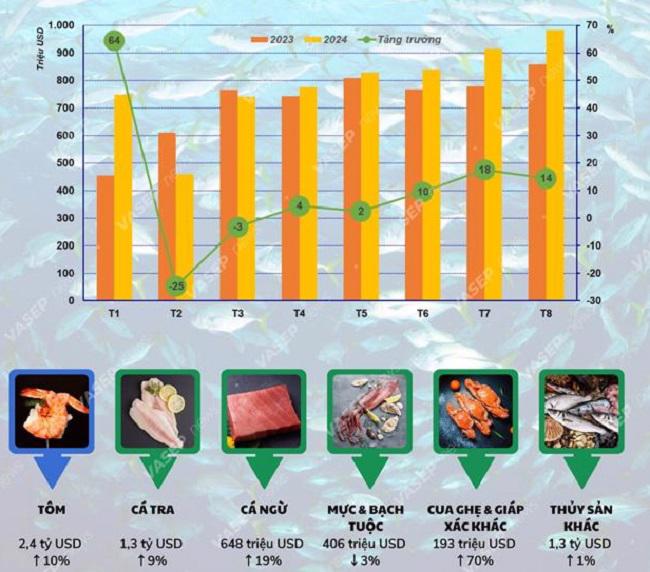
Typhoon Yagi also caused significant disruptions to the supply chain and logistics. Transportation systems were congested due to floods and damage, delaying the transport of raw materials from farming areas to processing factories. Hai Phong Port, one of the largest ports in Vietnam, was also severely affected.
“Seafood export businesses face increased costs due to transportation disruptions and challenges in preserving goods. Delayed shipments have to be stored for extended periods, potentially affecting product quality and increasing the risk of losses,” shared Mr. Nguyen Hoai Nam.
RECOVERY SOLUTIONS AFTER THE TYPHOON
Given the significant losses incurred by northern seafood businesses, VASEP has proposed that local authorities suggest support solutions and policies to help farming households and businesses overcome difficulties, restore production, and stabilize their lives in the coming time.
In recent days, Quang Ninh, Hai Phong, and other provinces have made efforts to provide solutions to support people and businesses in resuming production and business activities after the typhoon.
“We request that banks consider waiving or reducing interest rates for affected customers and study the possibility of providing new loans to businesses and aquaculture farmers impacted by the typhoon to help them recover their operations. Implement debt handling and risk management in accordance with current regulations for severely affected customers who have lost their repayment ability.”
Mr. Cao Tuong Huy, Chairman of the People’s Committee of Quang Ninh Province.
Mr. Cao Tuong Huy, Chairman of the People’s Committee of Quang Ninh Province, shared that they have worked with credit institutions and bank branches to discuss and agree on solutions to support customers affected by Typhoon Yagi.
To overcome the challenges after the typhoon, Mr. Huy requested that banks share the difficulties faced by the people and businesses and provide appropriate support. He suggested restructuring the debt payment period and maintaining the debt group for affected borrowers without changing the debt group.
The State Bank has also requested commercial banks to focus on supporting businesses, people, and borrowers in immediately overcoming the difficulties caused by the typhoon. At the same time, they should temporarily freeze, postpone, and reduce interest rates on loans that have fallen due. Additionally, they should encourage active lending to customers for production recovery and business development.
Regarding solutions to support post-typhoon Yagi recovery, the Ministry of Finance directed the effective implementation of policies on tax extension, exemption, reduction, and fee waivers for organizations, individuals, and businesses affected by the typhoon and floods, in accordance with regulations.
To address supply chain disruptions caused by the typhoon, VASEP recommends that businesses closely coordinate with local authorities and logistics partners to restore goods transportation. Authorities should prioritize repairing transportation infrastructure, ports, and creating favorable conditions for the smooth flow of goods.
Exporting businesses should also be flexible in seeking alternative raw material sources and developing contingency plans to ensure uninterrupted production. The application of information technology and smart supply chain management can help businesses optimize production processes and minimize losses in emergency situations like typhoons and floods.
After the typhoon, one of the most significant risks to farming areas is water pollution and disease outbreaks. Synchronized implementation of disease surveillance and control should be carried out with the participation of the state, businesses, and farmers. Local authorities need to organize inspections and guide farmers on environmental sanitation measures, pond treatment, and ensuring clean water before resuming production. Additionally, investing in water treatment and environmental protection systems for farming areas can help reduce the risks of future diseases and pollution.
“Resolute in the Pursuit of 7% Growth, Despite the Super Typhoon’s Challenges”
The outlook for Vietnam’s economy remains positive, with forecasts from both domestic and international economic organizations predicting high-growth scenarios that could even surpass the upper target of the 2024 GDP goal. Despite the potential setbacks caused by Super Typhoon Yagi, Prime Minister Pham Minh Chinh remains steadfast in his ambition to achieve a remarkable 7% growth rate for the year.
The Comeback King: How the Van Don Fishermen Rose from the Ashes
“We may stumble and fall, but we, the people of Van Don, always get back up. Just two years after the devastating Super Typhoon Yagi, we will rise again, stronger and more resilient, and Van Don will flourish once more.” This is the defiant and hopeful statement made by the resilient community of Van Don, Quang Ninh, in the aftermath of Super Typhoon Yagi.
“Stay Strong, Northern Vietnam!” – A Journey to Bring Clean Water to Flood-Affected Communities
With a spirit of camaraderie and unity, we go the extra mile, traversing geographical hurdles and braving mountainous terrains and floodwaters, to deliver pure drinking water to those in need.


